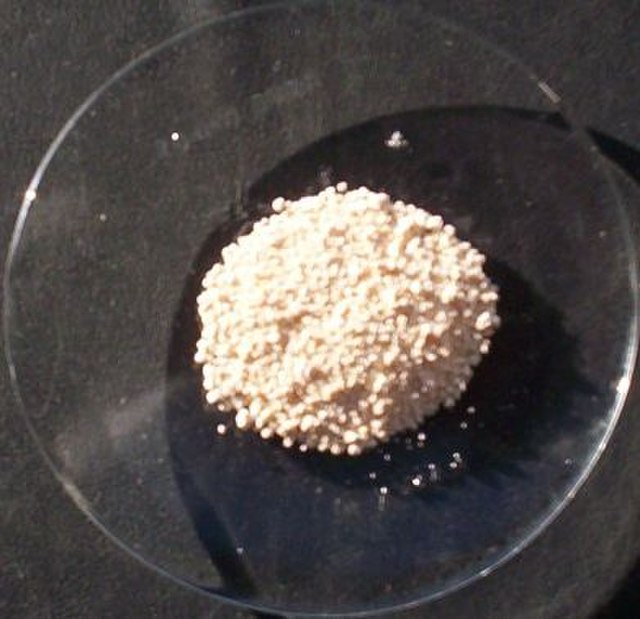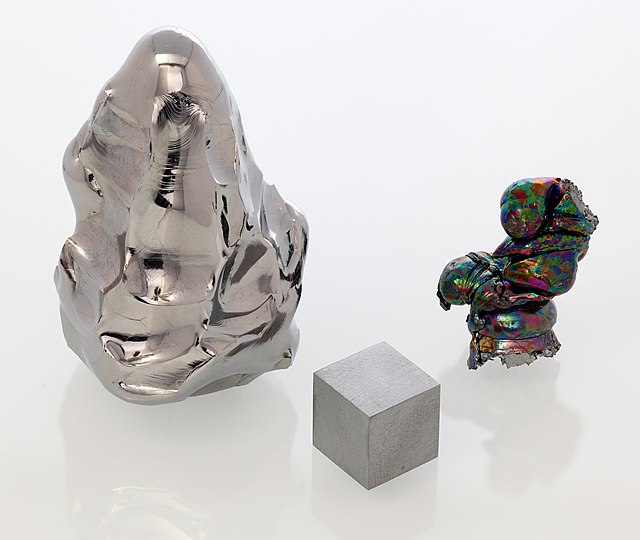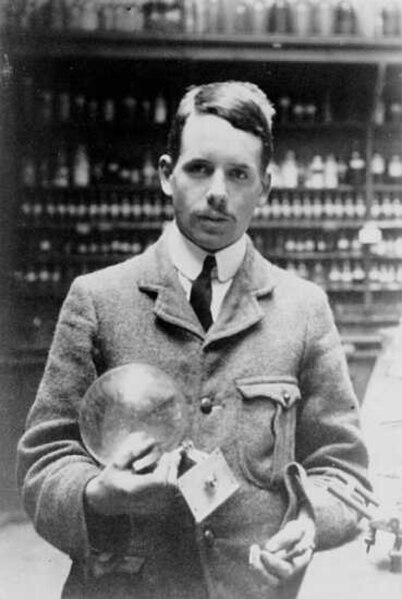Hafnium is a chemical element; it has symbol Hf and atomic number 72. A lustrous, silvery gray, tetravalent transition metal, hafnium chemically resembles zirconium and is found in many zirconium minerals. Its existence was predicted by Dmitri Mendeleev in 1869, though it was not identified until 1922, by Dirk Coster and George de Hevesy, making it one of the last two stable elements to be discovered. Hafnium is named after Hafnia, the Latin name for Copenhagen, where it was discovered.
Pieces of hafnium
Hafnium dioxide (HfO2)
Zircon crystal (2×2 cm) from Tocantins, Brazil
Melted tip of a hafnium consumable electrode used in an electron beam remelting furnace, a 1 cm cube, and an oxidized hafnium electron beam-remelted ingot (left to right)
The atomic number or nuclear charge number of a chemical element is the charge number of an atomic nucleus. For ordinary nuclei composed of protons and neutrons, this is equal to the proton number (np) or the number of protons found in the nucleus of every atom of that element. The atomic number can be used to uniquely identify ordinary chemical elements. In an ordinary uncharged atom, the atomic number is also equal to the number of electrons.
Russian chemist Dmitri Mendeleev, creator of the periodic table.
Niels Bohr, creator of the Bohr model.
Henry Moseley in his lab.







